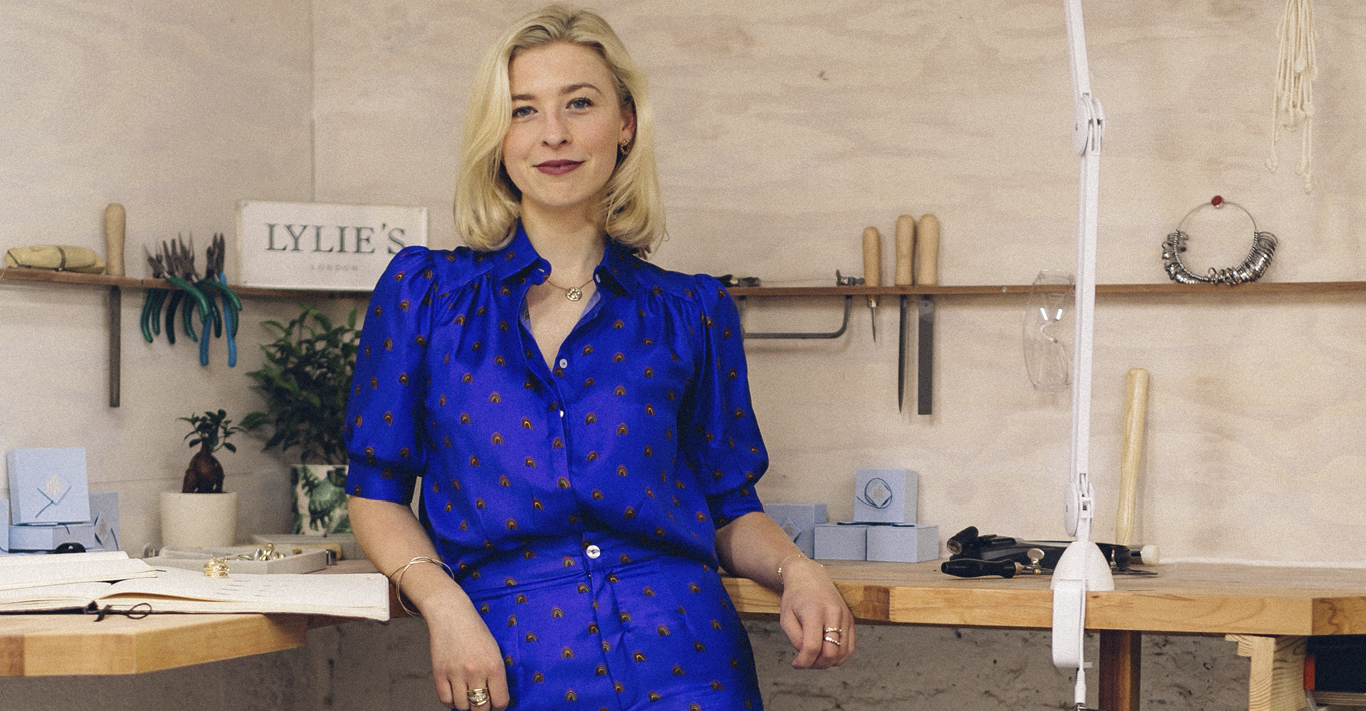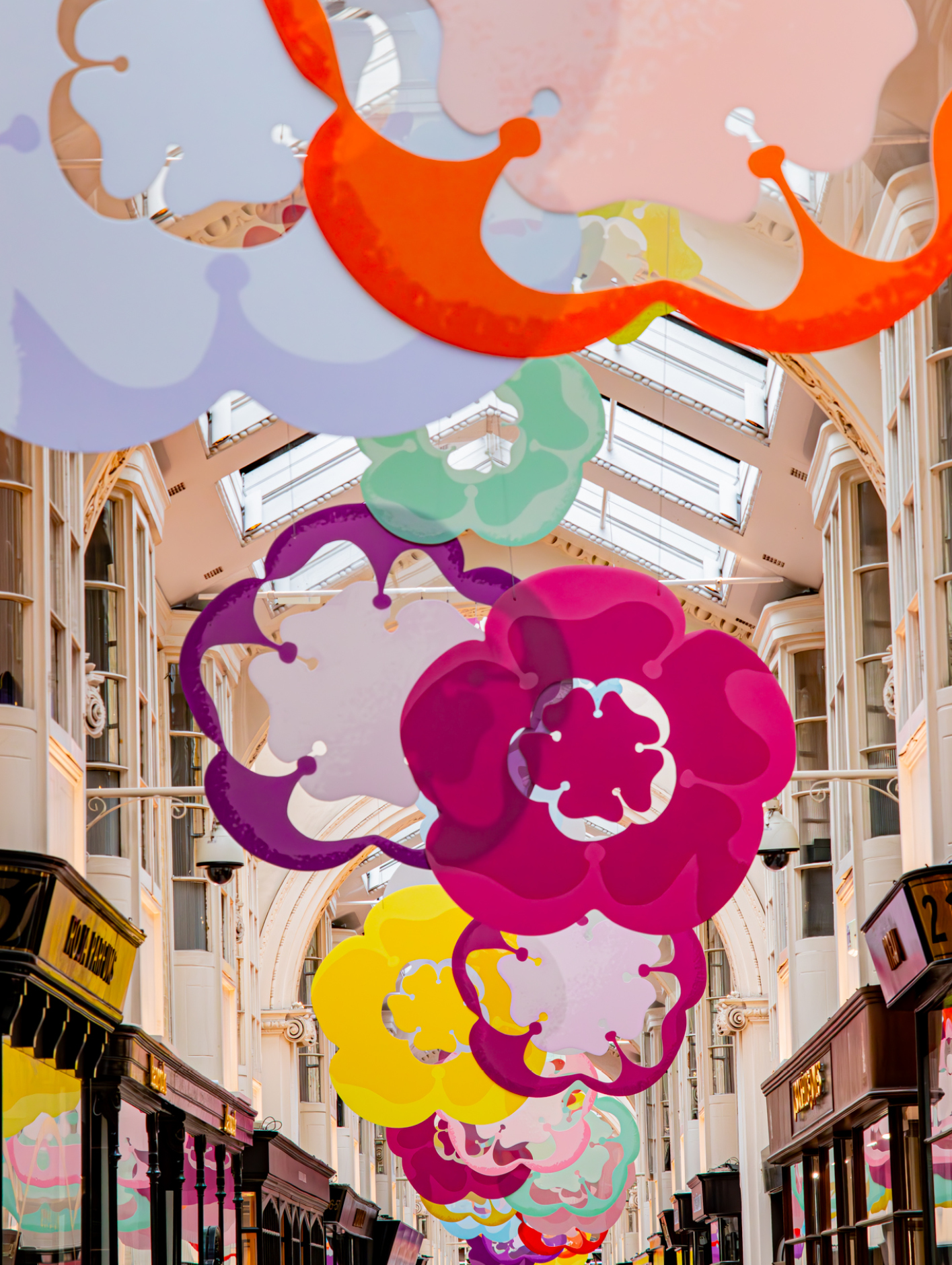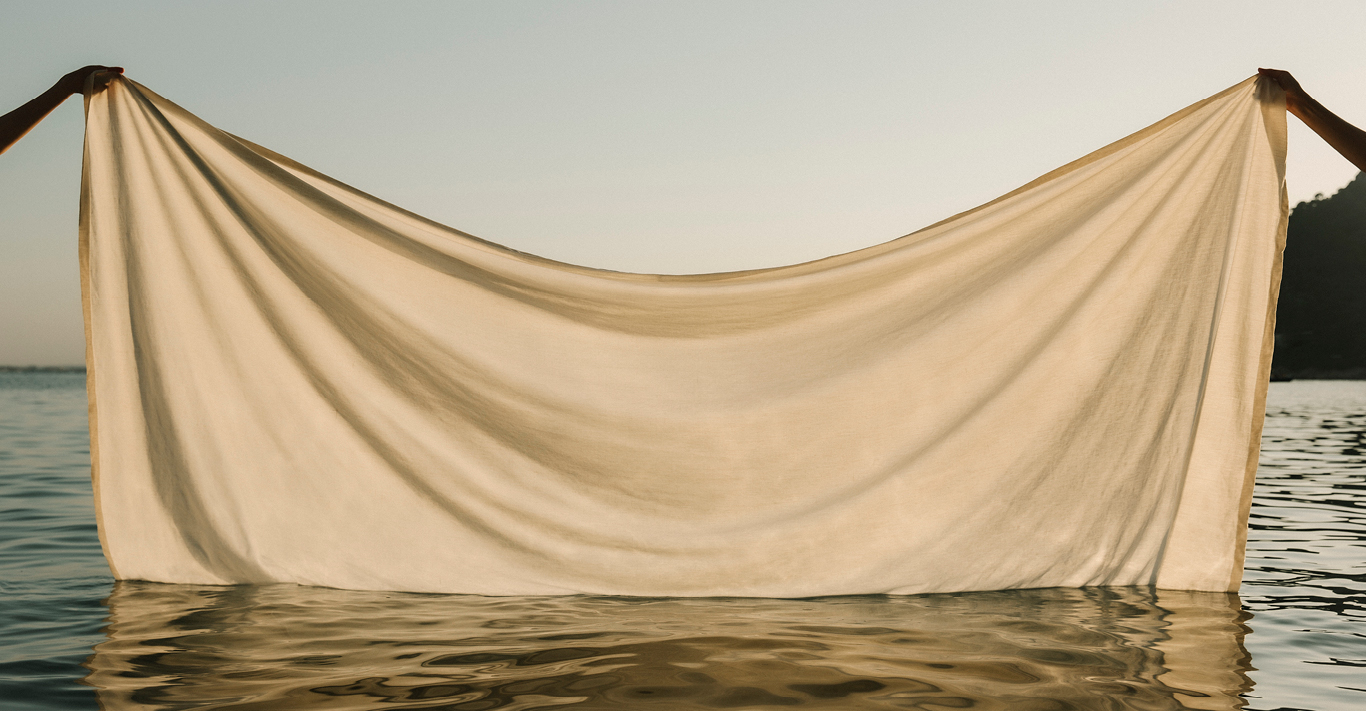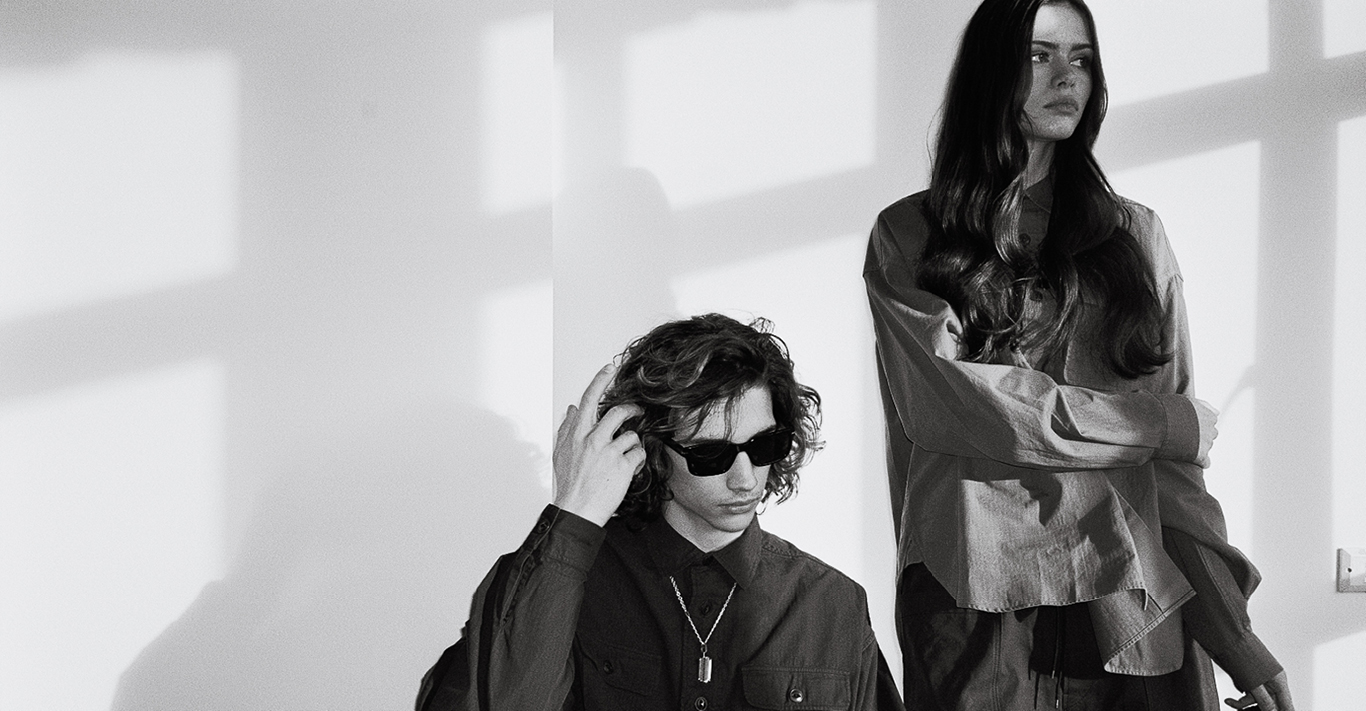WORDS
Gemma Billington
What is your professional background? How and why did you become interested in jewellery making?
My passions have always been sustainability and design and asking how something well designed can improve your life. I did an art and design foundation course and set up the businesses when I was 24. I also worked for two jewellers and was working full-time in the art world, so it was very much a side hustle at the beginning while I sort of built it up.
Can you tell us about urban mining and electronic waste – what are these processes and when did you first learn about them?
It was while I was doing a design GCSE that I first learned about the processes of e-waste. I had this amazing teacher who took us to a foundry to show us the process of lost wax casting, which is pretty much how most jewellery is still made now. Even if you were to 3D-print a piece of jewellery, you still cast it in the same way that’s been used for hundreds of years. But in terms of turning waste into jewellery, there are actually a couple of different ways of extracting precious metal from electronic waste.
The first one, pyrometallurgy, is where it’s smelted and burnt, which is not brilliant because you’re releasing a lot of CO2. The second one is the greener option, where the e-waste is shredded and is then put through different solutions to strip the metal off the circuit boards. And then the third process, which is going to be the next frontier of extracting metal from e-waste, is fungi, which eat the metal out of the e-waste. It’s so clever, you can basically train a fungus to eat pretty much anything. I am just so excited about e-waste because we’re faced with so much waste and the question is what to do with it and because of the wealth in it, it can almost pay for itself.
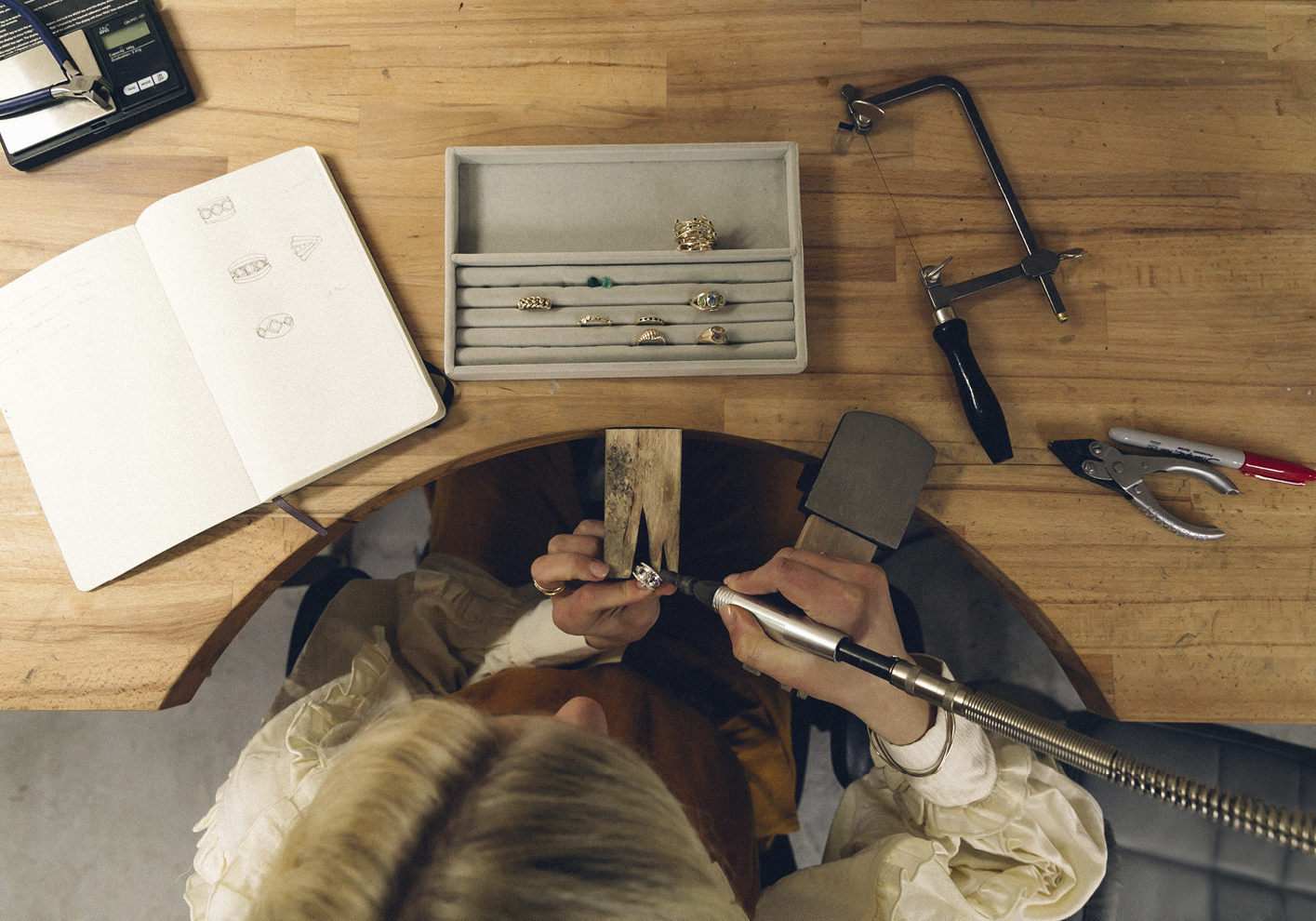
So, e-waste has actually been around for a while?
I would say it’s been semi-mainstream for around 12 years but it’s been a lot more prominent in the past two or three years. The government has done a couple of projects to try and spread the word. They’ve started something called Recycle Your Electricals to try and get people thinking about what happens to these things. We worked with Lily Cole on the Five Gold Rings campaign as part of Recycle Your Electricals in December 2020. It’s this attitude of “out of sight, out of mind” that needs to change.
Do you think that people are more conscious of where their jewellery comes from and are actively trying to find sustainable brands?
Historically, jewellers have always repurposed and reused because gemstones and gold have innate value in themselves. It’s not like a garment of clothing, where the material is much more challenging to repurpose. With gold you can reuse it infinite amounts of times. If you go back to the Cheapside Hoard, which is a collection of historic jewellery (Tudor, Jacobean and some Byzantine) discovered in 1912 by some workmen, you can see that they were reusing gemstones in those pieces. The practice was being done under the surface but I guess what I’ve really observed since setting up the business is that consumers are thinking much more about the journey of their gemstones.
Speaking of which, lab-grown stones were probably seen as undesirable not so long ago. Do you think attitudes have changed?
There was a jewellery report in 2019 that found 66 per cent of active engagement ring shoppers would consider lab-grown diamonds, and I think that does talk of the change that we’re witnessing. If you are getting engaged or married, you’re probably thinking about the next steps of your life and maybe that involves having children – so you’re suddenly more confronted with the realities of the environment and maybe that is affecting your decisions. But it’s just about educating the public as much as anything. A lab-grown diamond is chemically the same as a diamond, optically the same as a diamond and cheaper. There’s so much to win there.
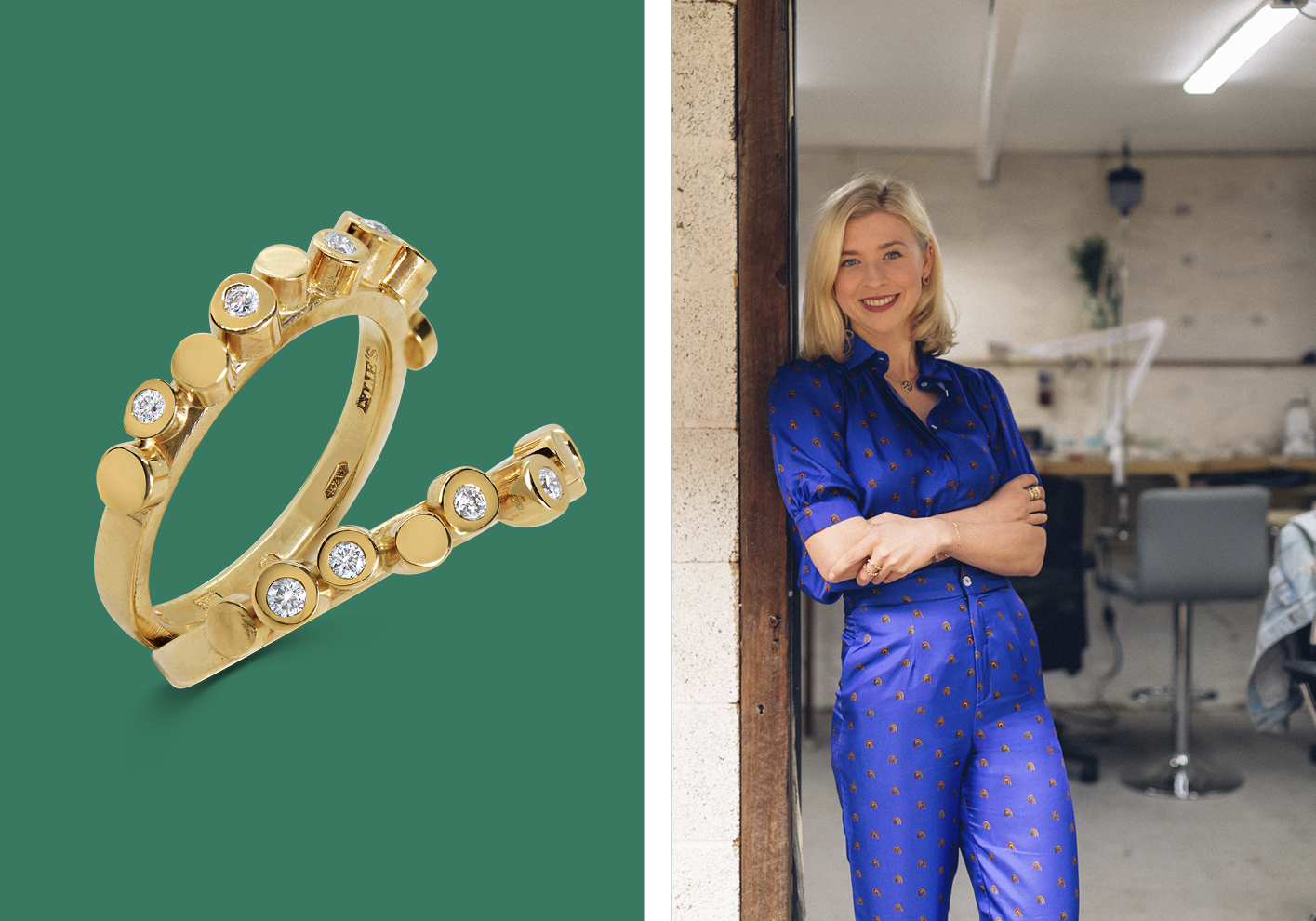
Tell us about the LYLIE gold exchange and how this works
We have these pouches that people can request and they can be reused up to 3,000 times. We send them off to people and then scan the QR codes and they’re walked through the process of packing up the pieces that they want to send in. We test them and once we’ve checked the metal we can then issue the customer with credit notes, which they can spend on new pieces of jewellery. We also add that metal back into our bullion, so we can give a guarantee that it has been recycled.
What inspires your designs and you, personally?
I love going on walks and looking at architecture. Architecture is a really big one for me. I studied history of art and I’m very interested in old paintings and the way that jewellery is shown in paintings. I spent a bit of time in Jamaica at the beginning of the year and have done a whole collection inspired by the different shapes of leaves and things like that – but it won’t be released for a while. Also when I do bespoke commissions, it generates so many other ideas for collection pieces because you’re often presented with a different cut or shape of stone, which generates all these different ideas. For instance, I remember when I was maybe a year into the business, a customer bought in this old cigarette box, which had been completely pavé set with diamonds, so we had about 400 stones to use, which spawned into lots of different pieces. When people commission bespoke stuff, they know it’s quite a long journey. It’s not instant and they’re involved in the process and they become friends. It’s just really lovely.
What are your favourite materials to work with?
Any gold is a delight to work with but I love to work with platinum. Unlike 9- or 18-carat white gold, you don’t have to re-rhodium plate it, so platinum always has the appearance of being beautiful and shiny. It doesn’t tarnish and I think that’s the most sustainable choice. At the moment the platinum price has gone right down, whereas 18-carat gold has gone up. Historically it was always the other way round.
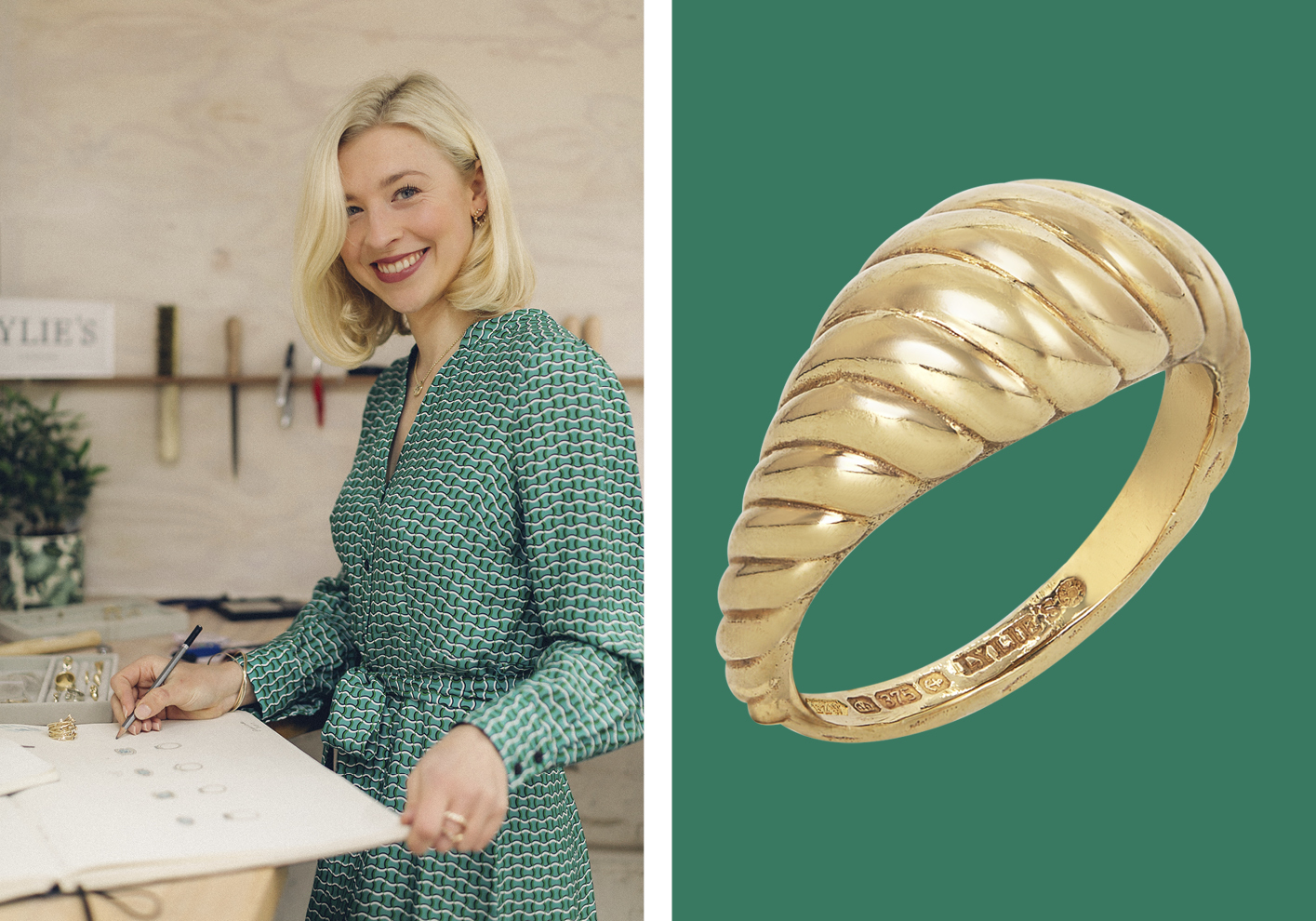
What would you say is your most treasured possession?
I was lucky enough to inherit my grandmother’s engagement ring and I remodelled it into the Wave Ring [pictured above], which we now sell quite a lot of, and I also used gold from my other granny. It feels so special because it has so many treasured ingredients in it. In the business we’re about to launch a new remodelling design library, which will have 12 design templates that people can choose from and put their pieces into. It can be intimidating for people when they’re interested in remodelling something, but have absolutely no idea of what the cost might be. So these templates are at least an accessible starting point. We are about to release a collection of ethical engagement rings in July, which are pieces for men and women made using lab-grown or recycled antique diamonds, set with gold salvaged from e-waste and our gold exchange. We also have the Love Collection coming out this summer as well as our Ethical Engagement rings in July. Other than that, spreading the word about e-waste remains our main objective.

